
GEOLOGIA CROATICA
Scope & Guideline
Fostering Collaboration in Planetary Science
Introduction
Aims and Scopes
- Geological Mapping and Stratigraphy:
The journal features studies on geological mapping and stratigraphy, particularly in the context of the Adriatic region and surrounding areas, providing insights into geological formations and their historical significance. - Geochemistry and Mineralogy:
Research on geochemical and mineralogical characteristics of various deposits, including ore and sedimentary deposits, is a core focus. This includes studies on trace elements, mineral resources, and their potential for exploitation. - Palaeontology and Palaeoenvironmental Studies:
Papers investigating fossil records and reconstructing past environments are prevalent, contributing to the understanding of evolutionary processes and historical climate changes. - Hydrogeology and Environmental Geology:
The journal emphasizes hydrogeological studies, particularly in karst regions, exploring groundwater resources, contamination issues, and the impact of geological formations on water quality. - Tectonics and Structural Geology:
Research addressing tectonic processes and structural geological formations is essential, shedding light on the dynamics of the Earth’s crust in the region. - Remote Sensing and Geospatial Analysis:
There is a growing emphasis on utilizing remote sensing technologies and geospatial analysis for geological mapping, landslide assessments, and resource management.
Trending and Emerging
- Hydrochemical and Isotopic Studies:
There is a notable increase in studies focusing on hydrochemical and isotopic investigations, particularly in karst regions. These studies are crucial for understanding water resources and contamination issues, especially in light of climate change. - Geological Impact of Human Activities:
Research addressing the geological impact of human activities, such as mining and urban development, is on the rise. This reflects a growing concern for environmental sustainability and resource management. - Advanced Remote Sensing Applications:
The application of advanced remote sensing technologies is trending, particularly for geological mapping and landslide analysis, indicating a shift towards high-tech methodologies in geological research. - Palaeoenvironmental Reconstruction:
The trend towards detailed palaeoenvironmental reconstructions using various geological and biological indicators is emerging strongly, providing insights into historical ecosystem changes and responses to climate shifts. - Geothermal Resource Assessment:
Research on geothermal resources, including their hydrochemical characteristics and potential for sustainable energy, is becoming more prominent, aligning with global trends towards renewable energy sources.
Declining or Waning
- Traditional Mineral Exploration:
While mineral exploration remains important, there has been a noticeable decline in papers solely focused on traditional exploration methods. The shift seems towards more integrated approaches that include environmental considerations. - Sedimentology of Non-Marine Deposits:
Research focusing exclusively on non-marine sedimentology appears to be decreasing, possibly due to an increasing interest in marine and transitional environments that provide broader ecological insights. - Paleoclimatology Studies:
Although still relevant, dedicated studies on paleoclimatology have become less frequent, as researchers may be integrating these topics into broader environmental and geological assessments. - Geological Hazards Assessment:
There has been a reduction in the number of papers specifically dedicated to geological hazards, such as landslides and earthquakes, as these topics are increasingly covered within broader environmental studies.
Similar Journals

ANNALES SOCIETATIS GEOLOGORUM POLONIAE
Exploring the Frontiers of Geology and Stratigraphy.ANNALES SOCIETATIS GEOLOGORUM POLONIAE is a distinguished journal published by the Polish Geological Society, focusing on pivotal research in the fields of geology, economic geology, and stratigraphy. With an ISSN of 0208-9068, this journal has established itself as an essential platform for disseminating significant findings and advancements in geological sciences since its convergence in 2008. The journal proudly holds a Q2 quartile ranking in the categories of Economic Geology, Geology, and Stratigraphy as of 2023, indicating its respectable position within the global academic community. Researchers will find its indexed status in Scopus, ranking #138/321 in Geology and showcasing a solid presence in key geological sub-disciplines. While the journal is not open access, it remains a vital resource for professionals and students striving for insight into contemporary geological research. Located in Krakow, Poland, the journal continues to contribute significantly to the understanding of geological processes and resources, making it an indispensable reference for anyone in the field.
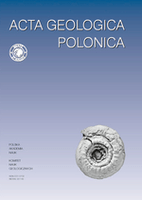
ACTA GEOLOGICA POLONICA
Innovative research shaping the landscape of geology.ACTA GEOLOGICA POLONICA is a distinguished journal published by the Polska Akademia Nauk, in collaboration with the University of Warsaw's Geology Department. Since its inception, it has served as a vital platform for disseminating innovative research in the field of Geology, reflecting a commitment to advancing scientific knowledge in Earth and planetary sciences. With an ISSN of 0001-5709 and an E-ISSN of 2300-1887, this journal provides a rigorous review process and is classified in the Q3 quartile for Geology as of 2023, indicating its growing influence in the discipline. Despite not being open access, the journal facilitates meaningful contributions that span a range of geological topics from fundamental research to applied sciences, thereby enriching the academic landscape. Researchers, professionals, and students alike are encouraged to engage with the valuable findings and discussions contained within its pages, which continue to shape the future of geological inquiry.

INTERNATIONAL JOURNAL OF EARTH SCIENCES
Transforming Understanding of Geological ProcessesINTERNATIONAL JOURNAL OF EARTH SCIENCES, published by Springer, is a leading journal in the field of Earth and Planetary Sciences, distinguished by its Q1 quartile ranking in the 2023 category of Earth and Planetary Sciences (miscellaneous). With an ISSN of 1437-3254 and an E-ISSN of 1437-3262, this journal has been a pivotal platform for researchers, academics, and practitioners since its inception in 1996. The journal's focus encompasses a broad range of topics within Earth sciences, making it a vital resource for contributions that enhance our understanding of geological processes, climate change, and planetary dynamics. The impact factor reflects its high standards and the significance of the research it publishes, ranking it in the 74th percentile among its peers as per Scopus. Furthermore, the journal offers Open Access options, facilitating the global dissemination of groundbreaking research. The editorial team is committed to advancing knowledge in Earth sciences, serving as an essential reference for students and professionals looking to engage deeply with this dynamic field.
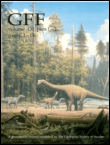
GFF
Connecting Scholars to the Rich History of Earth.GFF is a prestigious academic journal dedicated to advancing research in the fields of Geology and Paleontology. Published by Taylor & Francis Ltd in the United Kingdom, GFF serves as a vital platform for disseminating innovative findings and fostering discussions among researchers, professionals, and students alike. With a noteworthy impact factor reflecting its significance in the scientific community, GFF has achieved Q2 ranking in both Geology and Paleontology, underscoring its commitment to high-quality scholarship. The journal has been operational since 1872, accumulating a rich history of contributing to our understanding of earth sciences. It currently ranks #133 out of 321 in Earth and Planetary Sciences - Geology, and #50 out of 113 in Paleontology according to Scopus rankings. Although it does not offer an open access option, GFF remains accessible through various academic databases, ensuring that cutting-edge research reaches a wide audience. Its comprehensive scope aims to explore critical advancements in geological and paleontological sciences, making it an essential resource for those committed to exploring the intricacies of our planet’s past and present.
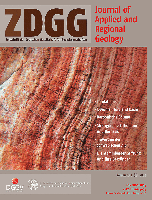
Zeitschrift der Deutschen Gesellschaft fur Geowissenschaften
Unveiling Earth's Secrets: A Journal of Geological ExcellenceZeitschrift der Deutschen Gesellschaft für Geowissenschaften is a prominent academic journal published by E Schweizerbart’sche Verlagsbuchhandlung, dedicated to advancing research in the field of Earth and Planetary Sciences. With its ISSN 1860-1804 and E-ISSN 1861-4094, this journal provides a platform for researchers to disseminate high-quality scientific articles and insights that contribute to our understanding of geological and environmental phenomena. Over the years, it has established itself as a reputable source within its category, holding a Q3 ranking among the Earth and Planetary Sciences (miscellaneous) journals in 2023, and achieving an impressive 85/195 rank in Scopus, placing it in the 56th percentile. The journal is published from Germany, specifically at Johannesstraße 3A, D 70176 Stuttgart, where it fosters a collaborative environment for scholars, professionals, and students alike. Although currently not an Open Access journal, it offers critical insights into various geoscience topics, making it an essential resource for those engaged in geological research and education. With its converged years stretching from 2008 to 2024, Zeitschrift der Deutschen Gesellschaft für Geowissenschaften is poised to continue its impactful role in the geosciences community.

Boletin de Geologia
Your Gateway to Cutting-Edge Geological Research.Boletin de Geologia is a prominent open-access journal published by UNIV INDUSTRIAL SANTANDER, dedicated to advancing the field of Earth and Planetary Sciences. Since its transition to open access in 2000, this journal has provided a platform for researchers to disseminate their findings and engage with the global scientific community. With an ISSN of 0120-0283 and an E-ISSN of 2145-8553, it is indexed in Scopus and has secured a notable Q3 ranking in the category of miscellaneous Earth and Planetary Sciences as of 2023, reflecting the impact and relevance of its published articles. The journal's geographical scope, rooted in Colombia, allows it to highlight significant geological research pertinent to the region while also contributing to global discussions. Scholars and practitioners interested in innovative research within this field will find Boletin de Geologia an invaluable resource for unlocking knowledge and fostering collaboration in the geological sciences.
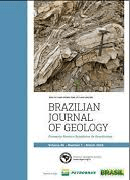
Brazilian Journal of Geology
Empowering Global Geoscientific CollaborationBrazilian Journal of Geology, the flagship publication of the SOC BRASILEIRA GEOLOGIA, has been a beacon of geoscientific research since its inception in 2013. With an ISSN of 2317-4889 and an E-ISSN of 2317-4692, this open-access journal has facilitated the dissemination of high-quality research across various branches of geosciences, making it freely accessible to a global audience since 2014. Hailing from Brazil, the journal proudly holds a Q2 ranking in Earth and Planetary Sciences as of 2023, and ranks #73 out of 195 in Scopus, indicating its growing impact and relevance in the field. The Brazilian Journal of Geology aims to bridge diverse geological studies with interdisciplinary approaches, promoting the understanding and application of geology in addressing contemporary scientific challenges. As it converges research from 2013 to 2024, the journal not only enriches the academic landscape but also serves as a vital resource for researchers, professionals, and students eager to explore the complexities of the Earth and its processes.

Journal of the Geological Society of Korea
Catalyzing Collaboration in Geological ResearchJournal of the Geological Society of Korea, published by the Geological Society of Korea, is a pivotal platform for researchers and professionals in the field of geology and earth sciences. With an ISSN of 0435-4036 and an E-ISSN of 2288-7377, this journal fosters the dissemination of scholarly articles that encompass a wide range of topics within earth and planetary sciences. Despite being categorized as Q3 in both Earth and Planetary Sciences (miscellaneous) and Geology, the journal has made significant strides in contributing to academic discourse, with a Scopus rank indicating robust participation in its academic field. Located in Seoul, South Korea, the journal aims to provide a comprehensive resource for the geological community, inviting submissions from both Korean and international researchers alike. With the convergence of years from 2019 to 2024, the Journal of the Geological Society of Korea stands as a vital resource for advancing our understanding of geological phenomena and fostering collaboration within the global geosciences community.
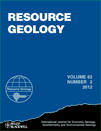
RESOURCE GEOLOGY
Connecting Geology with Resource InsightRESOURCE GEOLOGY, published by WILEY, is a peer-reviewed journal that serves as a vital platform for the dissemination of innovative research in the fields of geology and geochemistry. With an ISSN of 1344-1698 and e-ISSN 1751-3928, the journal has steadily contributed to the academic community since its inception in 1996, continuing through its planned convergence in 2024. With a Q3 ranking in both Geochemistry and Petrology and Geology categories, RESOURCE GEOLOGY is positioned within the competitive landscape of Earth and Planetary Sciences, ranked 164th and 93rd in its respective categories on Scopus, reflecting its significant contribution to the body of knowledge in these fields. While not an open-access journal, it provides access to essential research that advances our understanding of natural resources and geological processes. The journal is dedicated to publishing high-quality articles that appeal to researchers, professionals, and students looking to deepen their insight into the intricate interplay between geological phenomena and resource management.

Geosfernye Issledovaniya-Geosphere Research
Empowering Early-Career Scholars in GeosciencesGeosfernye Issledovaniya-Geosphere Research, published by TOMSK STATE UNIVERSITY, is a significant addition to the scholarly discourse within the fields of Earth and Planetary Sciences, Ecology, and Geography. With a focus on innovative research and insights that span a broad spectrum of environmental and geographical studies, this journal aims to provide a platform for researchers and students alike to disseminate their findings and discuss pressing issues facing our planet. Though classified in the Q4 quartile for its 2023 metrics, it serves as an important venue for early-career scientists and scholars from the Russian Federation and beyond to contribute to the global dialogue surrounding geosciences. The journal operates with various access options, making it accessible to a diverse audience. It encourages submissions that inspire robust discussion and exploration of topics vital to our understanding of the geosphere and its intricate dynamics. Covering the pivotal years from 2019 to 2024, Geosfernye Issledovaniya-Geosphere Research is poised to enhance its relevancy and impact within the academic community.